Last year, I had a lot of trips in prior to mid-March, before everything shut down. That gave me at least a bit of a head start on 2020 travel, even if most of the year was spent largely at home.
This year, my office has slowly started increasing work travel again. However, I personally had even less travel this year than I did in 2020, largely because I switched to a new program at work. While my old program was delivering a lot of devices I had to test at their destination (which drove a good portion of my work trips), my new program is in a planning phase that doesn’t require as much travel.

How far I was from home every day of this year
I did take more personal trips this year, though still not quite as many as I typically used to prior to 2020.
Table of Contents
Hotel Nights
Nights spent away from home were down slightly this year, with a total of 31 nights.

Nights Away from Home by Year. Includes both business and personal nights.
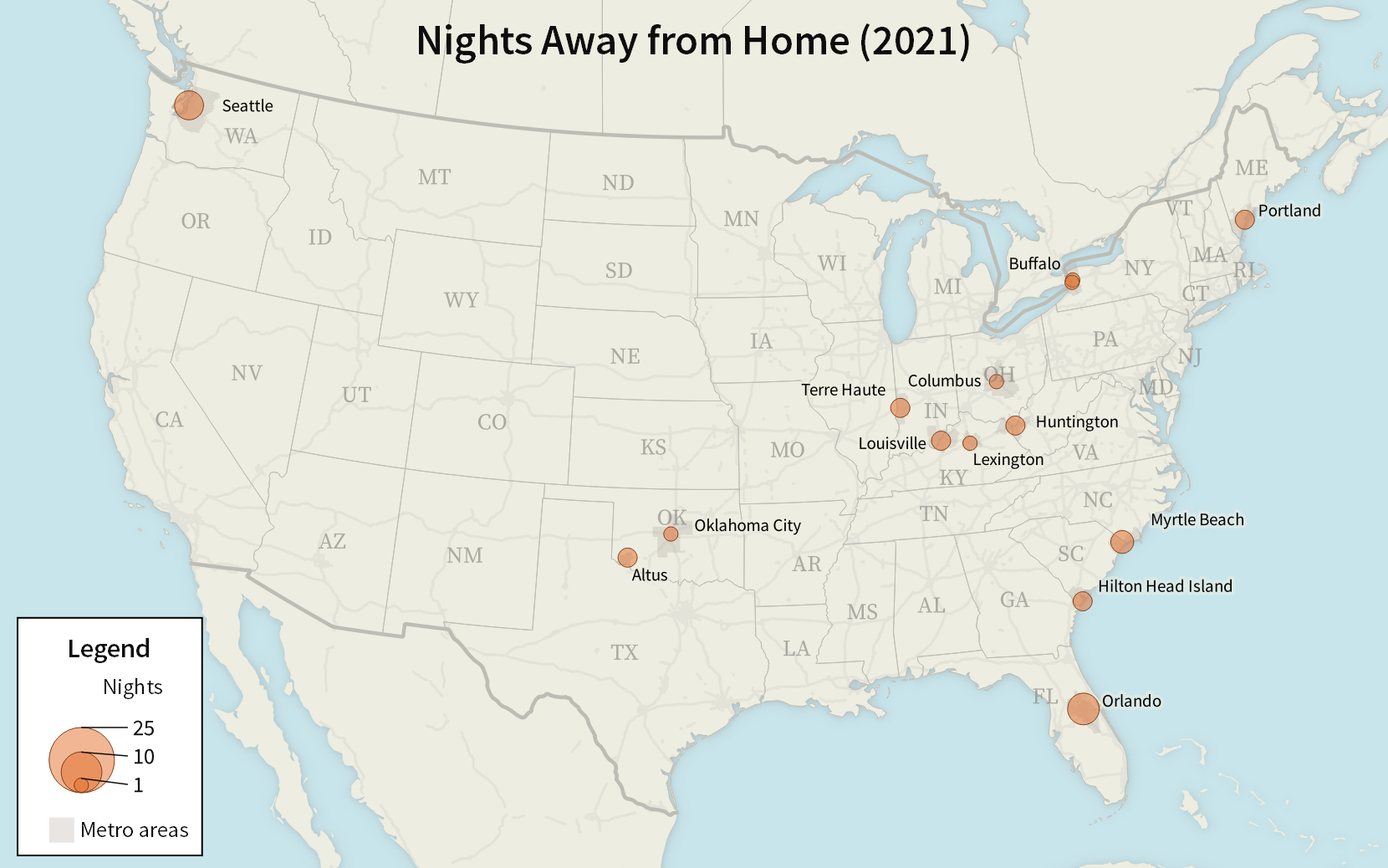
This year, I tended to spend small amounts of time in a lot of different places; no location really dominated my travel. My two longest trips were 6 nights in Orlando and 5 nights in Seattle.
Flights
I flew on 20 flights this year.

Number of Flights by Year. Includes both business and personal flights.
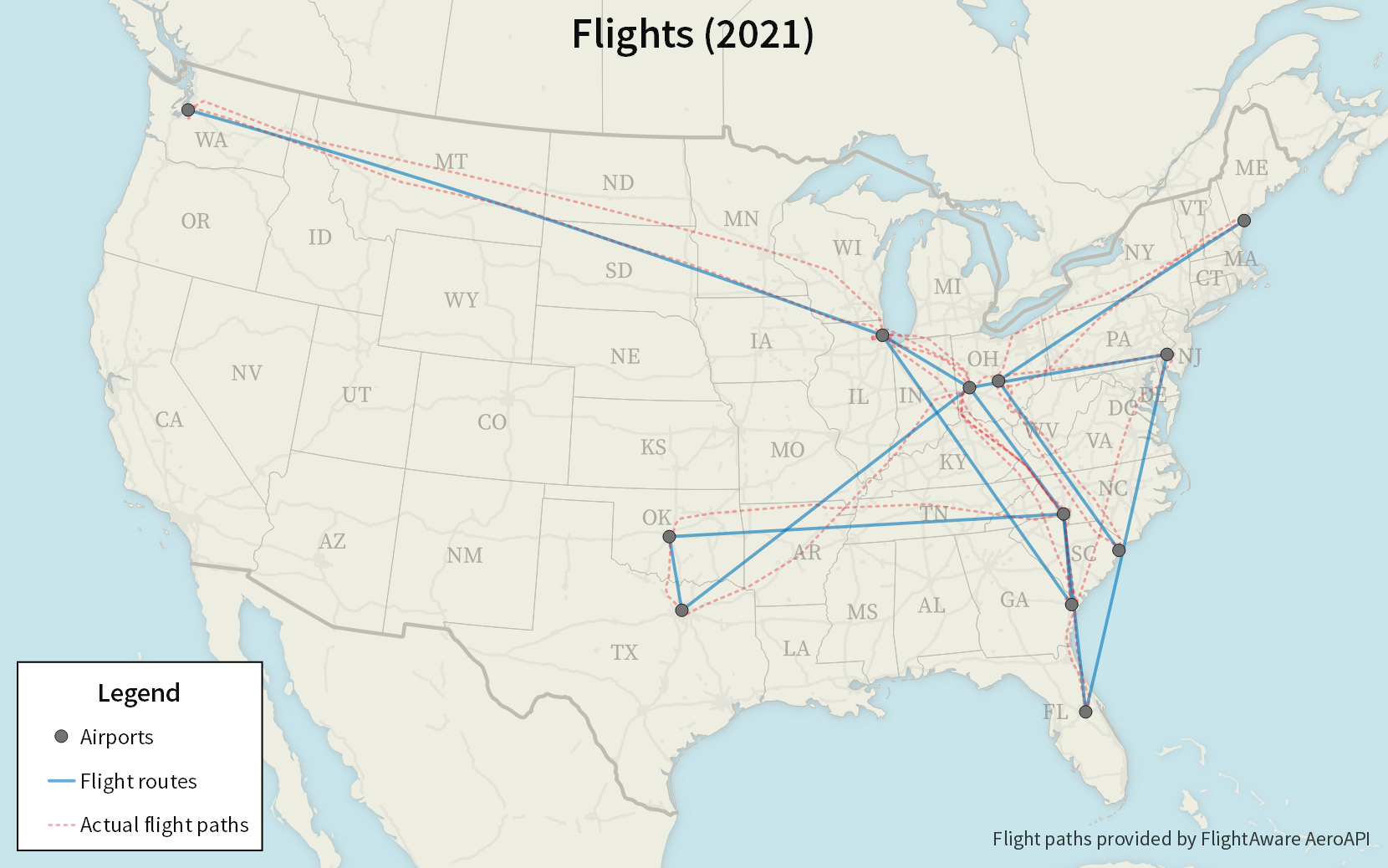
My travel was largely focused in the eastern U.S., with a few exceptions.

Flight Graph for 2021
Although Dayton (DAY) is my hometown airport, I flew out of Columbus (CMH) a couple times to get direct flights on some personal trips. As it turns out, my trips from Columbus had no airports in common with those starting from Dayton.
One of those Columbus trips was also the first time I flew Southwest since 2016 (as Southwest stopped serving Dayton in 2017).
New Airports
I visited one new airport this year.
| # | Code | Airport | First Visit |
|---|---|---|---|
| 102 | MYR |
South Carolina,
United States
|
8 Jul 2021 |
Though I did not fly out of it, I also went to the Niagara Falls airport (IAG) to visit the Niagara Aerospace Museum.
New Aircraft
Whether or not I have a new aircraft this year is debatable. Back in May, I flew on what United calls a Bombardier CRJ-550 for the first time. However, a CRJ-550 is essentially just a CRJ-700 with fewer seats installed in it,1 and I’ve flown in CRJ-700 aircraft plenty of times.

Bombardier CRJ-550 (Bombardier CRJ-700) (United)
Aircraft illustration by Norebbo
Driving
This year I apparently made up for my lack of flying with a lot of driving.

Distance Driven by Year. Includes both business and personal driving.
| Personal Cars | 28 738 mi | 46 249 km |
| Rental Cars | 1 176 mi | 1 893 km |
| Total | 29 914 mi | 48 142 km |
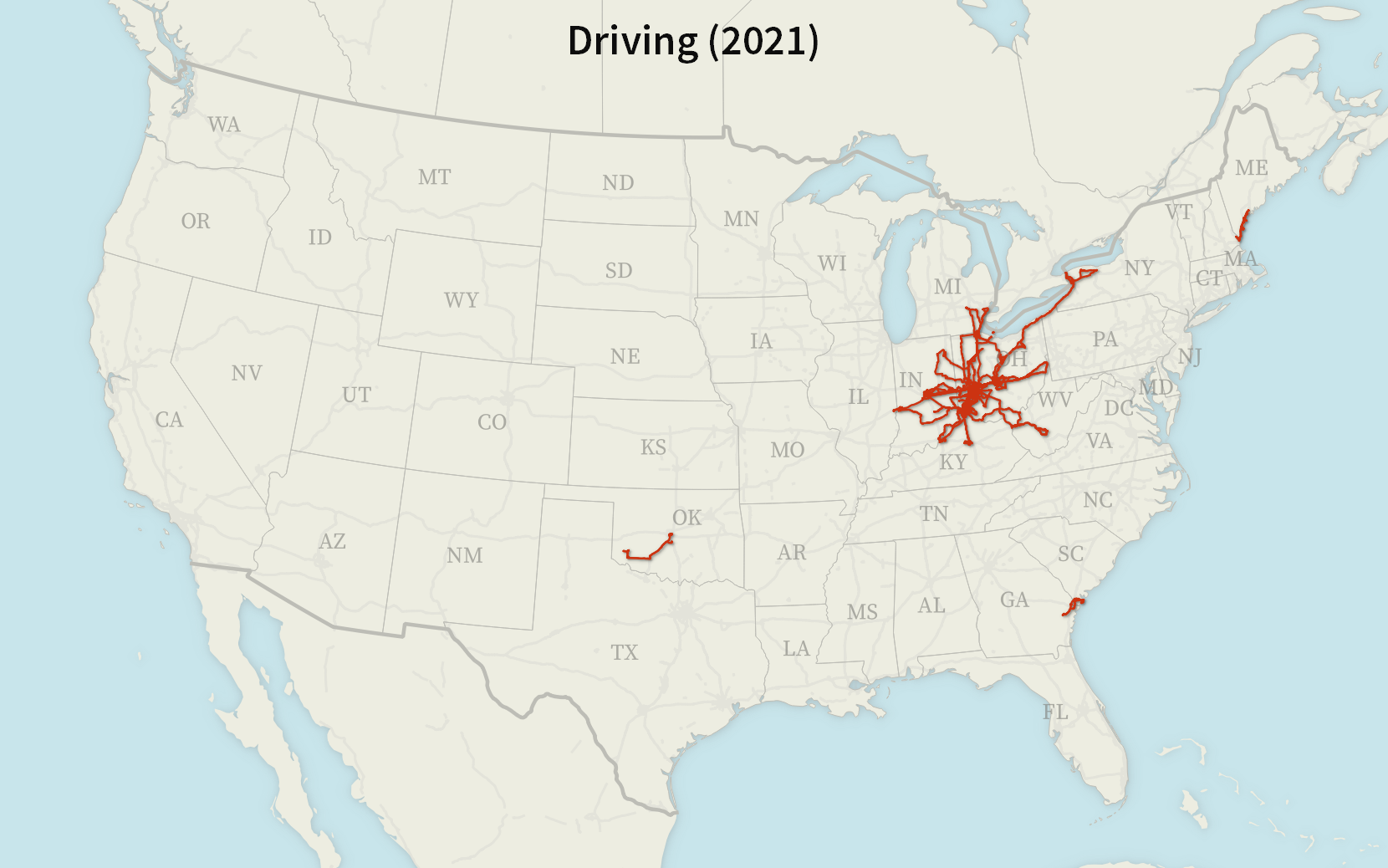
I did a few overnight trips within driving distance. One of my work trips was a drive to Louisville, Kentucky. I took personal road trips to Huntington, West Virginia; Lexington, Kentucky; Terre Haute, Indiana; and Buffalo, New York.
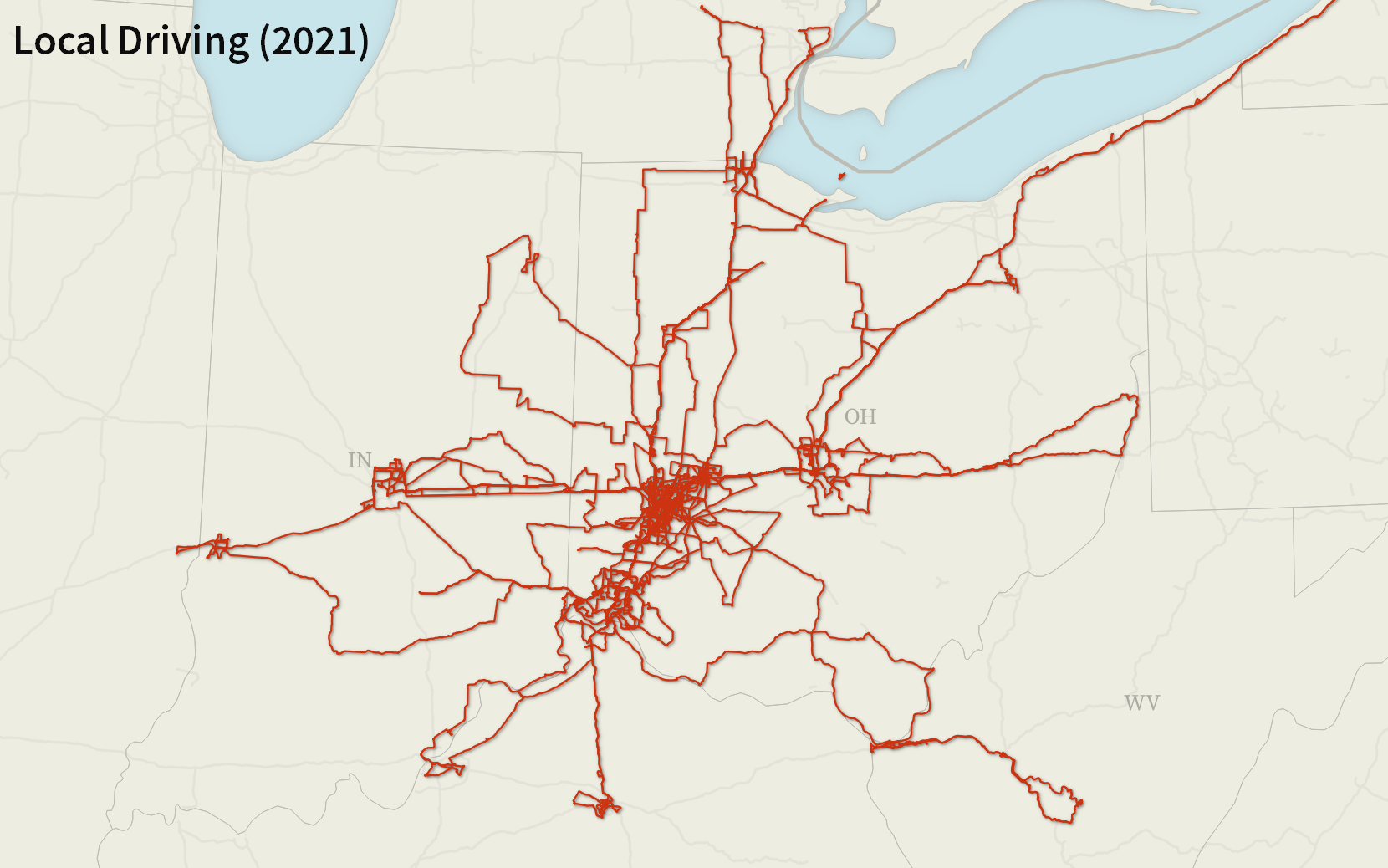
A lot of my local driving came from trying to visit area towns for the first time. Earlier in the year, I created my City Population Gravity listing of which towns in the U.S. theoretically have the most influence on me, weighted by a combination of their population and how close they are to where I live. From that listing, I took the top thousand towns and started making an effort to visit those I hadn’t been to yet. I mostly focused on smallish towns in Ohio and neighboring states—those I could visit on a weekend day trip.
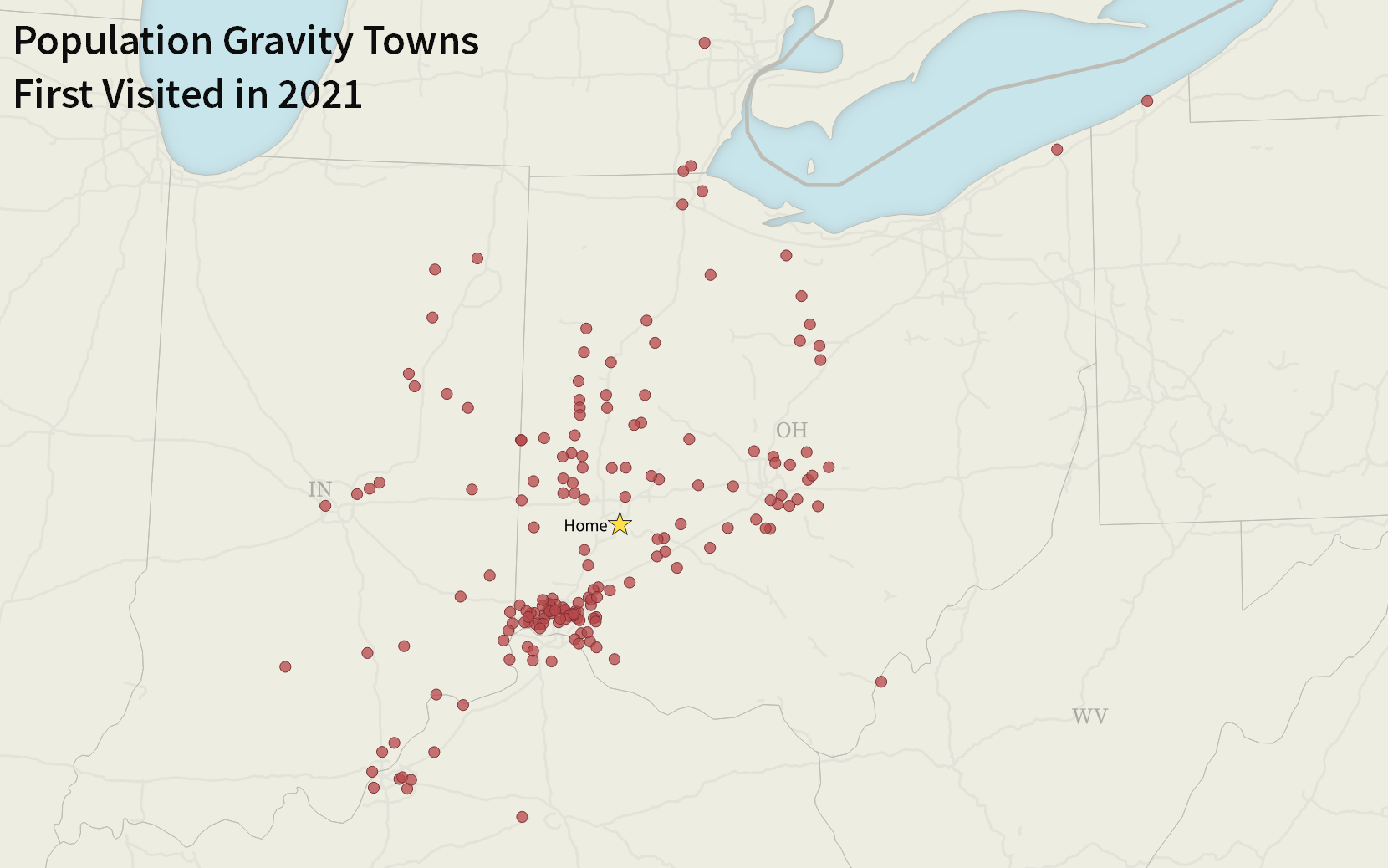
Towns in my City Population Gravity top 1000 that I first visited this year. I took short day trips for many of them; others were visited along trips I was already doing.
Though my 1176 rental car miles (1893 km) this year were the lowest I’ve had since I’ve been tracking it, seventeen of those miles (27 km) represent the first time a rental golf cart has made it into my driving log. In October, we took a trip up to Ohio’s Lake Erie shoreline, then took a ferry to Put-in-Bay on South Bass Island. Though there is a ferry to bring cars to the island, it’s easier to take a passenger ferry instead and just rent a golf cart upon arrival.
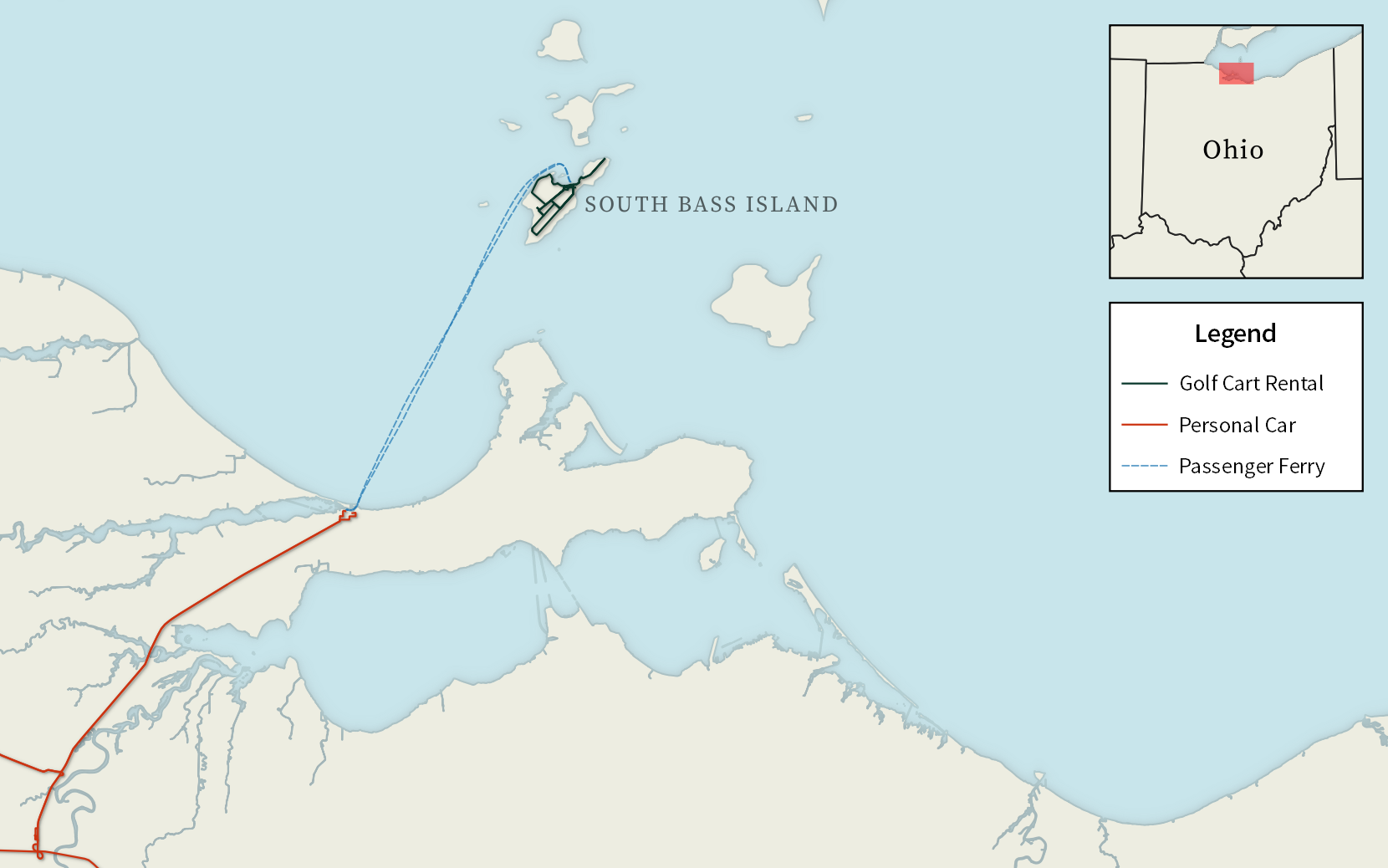
Normally I wouldn’t count something like a golf cart as a rental car. In this case, the rental carts were converted to be street legal (with Ohio license plates and everything), so I suppose this was technically just my first fully-electric rental.
Logging My Driving
Previously, keeping my driving log was a pretty manual process; I’d have to copy GPX files off of my devices, use a third-party website to convert them to KML, and then copy and paste individual driving tracks to organize them by date. Earlier this year, I wrote scripts to handle all of this for me; downloading and processing driving data after a trip now only takes me a few seconds, rather than the 10–15 minutes it used to take.
Despite the processing getting easier, GPS logging hardware gave me a lot of trouble this year.
At the start of the year, I was using a Garmin DriveSmart 50 automotive navigation unit to log my driving. It stopped working on a trip in March—it was no longer able to lock on to the GPS satellites. As it was about four years old, it was well out of warranty, so I stopped at an electronics store and bought a DriveSmart 55. However, I ran into issues with the new device rebooting while trying to do rerouting, and I ended up having to exchange it for another one after just a few weeks.
The replacement DriveSmart 55 has been a little more stable, but it still feels like it’s underpowered. Even during routine use, the UI latency is a bit high; during times when it’s working hard (e.g. running its rerouting algorithm around traffic or a missed turn), it’ll often start dropping its logging for a while, leading to gaps in my driving data. I suspect that it doesn’t seem to have enough RAM to support the high-DPI screen and 3-D terrain that its predecessor didn’t have; if I disable the digital elevation database, performance does improve a little, though it still has problems.
This frustrates me a bit since I’ve been one of the holdouts still using a separate GPS device rather than just using smartphone navigation, largely because the separate device allowed me to automatically log my driving data. I’ve considered buying a newer unit to see if the 55 was just uniquely under-specced, but I’ve seen reviews for the new DriveSmart 66 complaining about the device restarting during rerouting, so it sounds like the new devices have the same issue. At some point, I’m probably just going to have to get a dedicated GPS logging device (that isn’t a navigation unit).
Visited States
I did not visit any new states this year, but I did spend time in fifteen total states (including my home of Ohio).

I had no international travel this year, although I was within sight distance of Canada from three separate U.S. locations:
- Windsor, Ontario—from Detroit, Michigan
- Niagara Falls, Ontario—from Niagara Falls, New York
- Middle Island, Ontario (the southernmost point of Canada)—from the ferry to Put-in-Bay, Ohio
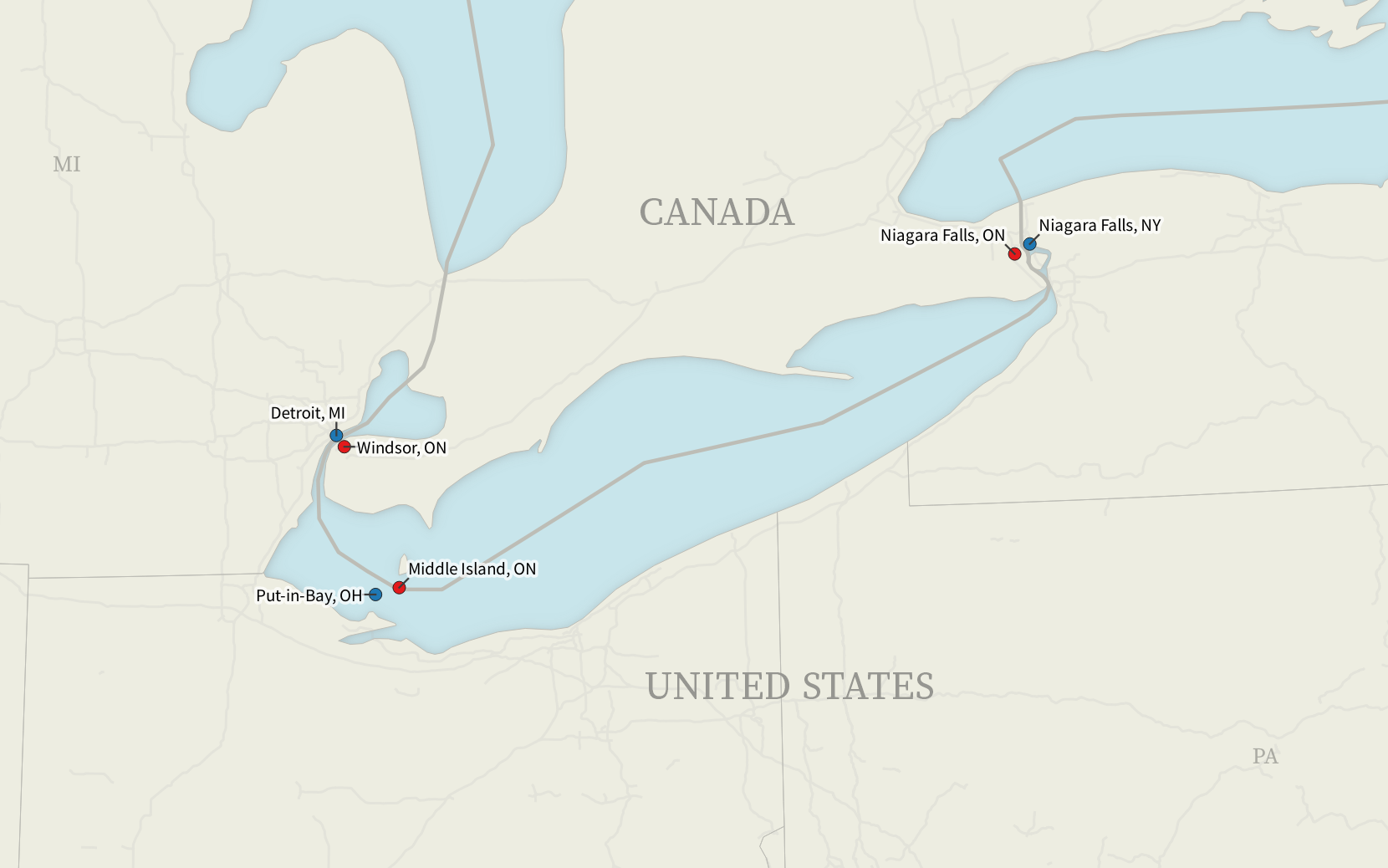
U.S. locations I visited this year, across from Canadian locations I didn’t visit this year.
Frequent Traveler Status
Frequent flyer programs and hotel status programs continued to be weird this year.

With business travel still down, all of the airlines I had status on extended my 2019 status yet again. However, I did not fly enough on any airline to earn status, so my status will only go on for as long as the airlines keep extending it.
Hilton cut their status requirements in half, so Diamond status only required 30 nights. I spent 22 actual nights in Hilton properties this year, but they also allowed 35 extra nights from last year to roll over for my status this year, for a total of 57 status-qualifying nights and a renewal of my Diamond status.
Trivia
- My longest flights this year were from Chicago O’Hare (ORD) to Seattle (SEA) and the same route in reverse, at 1716 miles (2761 km) each way.
- My shortest flight this year was from Oklahoma City (OKC) to Dallas/Fort Worth (DFW), with a distance of only 175 miles (281 km).
- This year, I had my first flight on an inaugural route—United’s first time flying between Columbus (CMH) and Portland, Maine (PWM).
-
The CRJ-550 uses the same ICAO type designator (
CRJ7) as the CRJ-700, and I store aircraft types in my flight log by ICAO type designator, so I stored these flights as CRJ-700 flights in Flight Historian. ↩︎